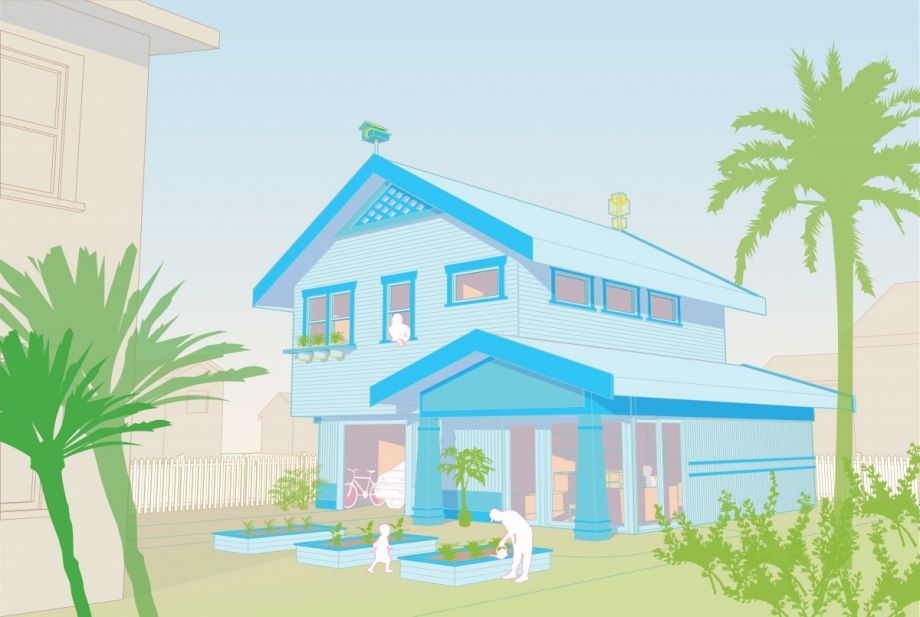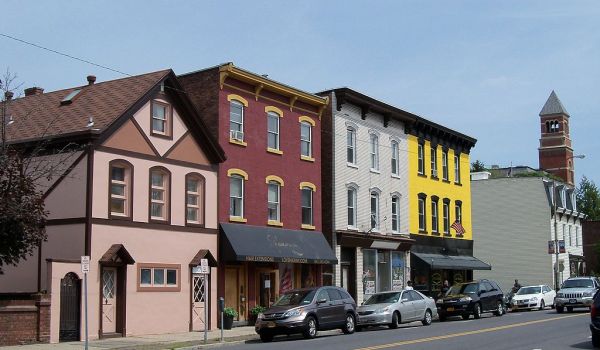In 2016 and 2017, the California state legislature passed a slew of reforms reducing regulations on accessory dwelling units (ADU) such as basement apartments, garage conversions and backyard cottages. The reforms address ADU parking requirements, the permitting process, design requirements, fees and more. The state sees ADUs as a small part of a broad effort to address its housing crisis as demand outpaces housing supply and housing costs rocket ever higher.
It’s too early to see the impacts of the ADU reforms on the ground, but there’s already been a massive uptick in ADU permit applications in many California cities. In December, researchers at University of California Berkley’s Terner Center for Housing Innovation released a report looking at ADU applications from 2015 through 2017 to understand how the regulatory changes are spurring ADU construction.
“I expected to see a jump, given the recent legislation, but I didn’t expect to see such a dramatic jump,” says report author David Garcia, Terner Center’s policy director. “California basically legalized ADUs throughout the state on January 1, 2017. It turned out, there was quite a pent-up demand from homeowners.”
Los Angeles saw the most dramatic jump, from 90 applications in 2015 and 80 in 2016 to a whopping 1,970 applications as of November 2017. Oakland, which had 33 and 99 applications in 2015 and 2016, jumped to 247 in 2017. Long Beach had zero applications in 2015 and just one in 2016. In 2017, it had 42. San Francisco has been experimenting with looser ADU regulations since 2013, but still saw applications increase from 384 in 2016 to 593 in 2017.
The legislation did several important things to encourage ADU construction. For one, it made ADUs legal in all California cities. It also established design standards that, when met, allow ADU development to receive “ministerial approval” instead of discretionary approval. In other words, ADU builders can apply for and receive construction permits over the counter at their city planning office, instead of seeking approval from a design commission or city council. When the proposed ADU is located within a half-mile of transit, is in a designated historic district, is attached to the existing unit and in several other instances, homeowners are not required to build an off-street parking space for the ADU. The 2016 legislation also creates a path for illegal ADUs to become official. In Los Angeles, for example, there may be as many as 50,000 unpermitted ADUs.
Garcia says it’s two reforms—easier permitting and reduced parking requirements—that have had the biggest impact on the increased ADU applications. Time is money in housing construction, and complicated permitting delays the process. Similarly, the parking requirement adds construction cost and complexity to projects. For would-be ADU builders, that can be a dealbreaker, Garcia explains. “ADUs are not driven by big real estate companies. They’re driven by homeowners.”
Though ADUs are just a small part of the housing crisis solution, some housing advocates such as Stuart Cohen are excited to see an easier path to their construction. Cohen is executive director of TransForm, a nonprofit focused on transportation, housing and sustainability issue in California. He says, “I think they fit a very important niche [in the housing market]. ADUs are naturally on the lower end of the cost spectrum, so part of solving the affordability crisis is having more ADU construction.”
Still, Cohen says it’s important to remember, “there’s no substitute for having a massive infusion of funding and construction of dedicated affordable housing. ADUs are a great complement to, not a replacement for that funding.”
ADUs are rarely used as subsidized affordable housing. But because of their size, cost of construction and the fact that they’re usually built by individual homeowners instead of development companies, ADUs are often rented at below market rate. Another Terner Center report from 2017 found that 58 percent of ADU owners rent their units at below-market rates.
According to a recent New York Times report on California housing, more than half the land in both San Francisco and Los Angeles is filled by neighborhoods in which 90 percent of the housing is single family homes. Most California cities have similarly prevalent single-family zoning. ADUs could greatly increase the housing stock in those zones.
Though there are fewer barriers to ADU construction now, Garcia and Cohen still want to see future reforms. They say size and setback requirements for detached ADUs need to be clarified. Because the rules are still “fuzzy,” Cohen says it can still be difficult for builders to get that over-the-counter approval.
In some cities, detached ADUs are still subject to many of the same fees as a much larger, single family home, such as impact fees, utility fees and school district fees. Garcia says adjusting fees and building codes to account for the fact that ADUs are far smaller and often have fewer people living in them than typical single family homes will further bolster the ADU boom.
Finally, Garcia wants to see a change to owner-occupancy rules. Currently, California requires homeowners to live on site in the main dwelling in order to build an ADU. He points out that there are many single-family homes on the rental market already on lots that could also house an ADU. But under current law they cannot.
According to the Terner Center report, it takes 18 months or less to take the majority of ADUs from design to completion. Though some cities such as San Francisco that loosened ADU regulations before the state are already seeing the uptick in finished ADUs, the wave of new units spurred on by the change in state law should begin midway through 2018.

Josh Cohen is Crosscut’s city reporter covering Seattle government, politics and the issues that shape life in the city.
Follow Josh .(JavaScript must be enabled to view this email address)
















